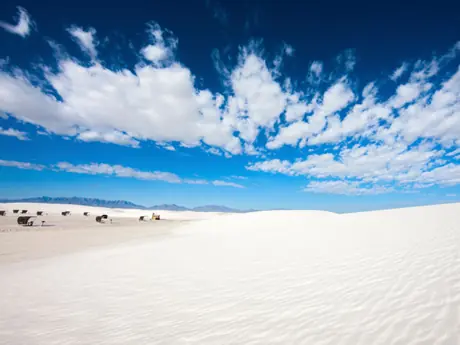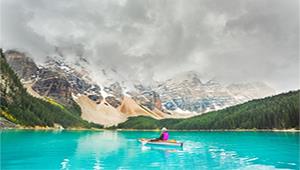
If sledding down white sand and sunset strolls sounds like the perfect way to spend a weekend, it might be time to head to New Mexico.
White Sands National Monument, first explored by the U.S. Army in 1849, provides year-round warm weather, 275 square miles of white sandy desert and ample opportunity to take sunset strolls, go sand sledding, and learn about the geology of the area.
More: Camp Near White Sands National Monument
Here's what you need to know before you plan a trip to this unforgettable desert location.
Get Familiar With White Sands National Monument
The first place to stop is the visitor's center, where you can learn about the geology and history of the towering dunes. Located at the entrance of the park, you'll find the visitor's center off Highway US-70 between the cities of Alamogordo and Las Cruces, New Mexico.
Here you'll learn a few important and fascinating facts about the area such as:
These dunes are rare: The dunes are made of gypsum, which is rarely found in the form of sand because it's water-soluble. Normally, it would dissolve in the rain and be carried to the sea. But here, the area is enclosed and has no outlet to the sea. When rain dissolves gypsum from the surrounding mountains it's trapped within the basin. Here, the rainwater either soaks into the ground or makes small pools, which soon dry out and leave gypsum on the surface. The wind breaks these crystals into small particles that are blown around and deposited to form white dunes.
They are always changing: The dunes are always changing their size and locations and the plants have adapted to this movement.
These dunes have made history: The white dunes of gypsum sand found here cover almost 275 square miles of desert, creating the world's largest gypsum dune fields.
Hot sand? Not here: Unlike typical sand, the gypsum doesn't get very hot. This makes it comfortable to walk barefoot on the dunes, even during hot, sunny days.
More: 10 Free Things to Do at National Parks
Plan Accordingly
Because the park lies completely within the White Sands Missile Range, both the park and U.S. Route 70 between Las Cruces and Alamogordo are subject to close when tests are conducted at the missile range. Tests occur twice a week, on average, for 1 to 2 hours. Always call ahead to make sure the road will be open for your visit.
- 1
- of
- 2
About the Author










Discuss This Article